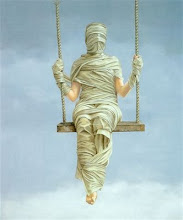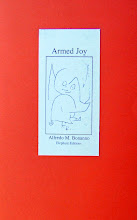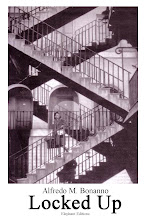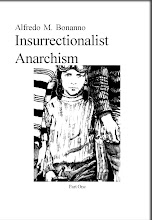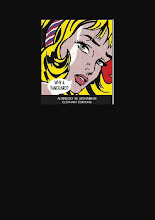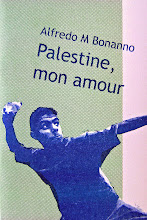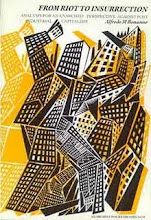Original title: Ma cose l’immaginario?, ‘ProvocAzione’ no.3, March 1987, p.6
One of the new concepts that is tending to appear with increasing frequency is that of the ‘social’, or ‘collective’, ‘imaginary’. It is nearly always thrown at you as though it were something that everyone is aware of, and is leading to attitudes and deductions that do not seem to me to be all that well founded.
Hence the need to clarify some of the aspects of this ‘concept’, which presents not a few difficulties.
As far as we can see the term ‘social’ or ‘collective’ imaginary is used to refer to the feelings that a socially significant event or situation gives rise to in society as a whole. But there is also an implicit reference to the means of communication that realise the passage of- such events from being circumscribed facts to their spreading in space and persistence in time as never before. In other words it would seem to be an unconscious (therefore irrational) mechanism by which members of society interpret particular events, in exactly the same way as the media do, i.e. in the way desired by the dominant political-cultural structure.
It is taken for granted that this actually occurs, and in fact there can be little doubt that the great mass of people are taken in by the information culture and the ideas elaborated by power. Nor can there be much doubt that most people react in such a uniform way as to make it possible to realise reliable political forecasts and projects even from quite modest samples. Mass society thinks and acts in a massified therefore foreseeable way, far more so than when social cohesion was guaranteed by vast analphabetism.
So far so good. Yet much could be said as to how this uniformity could be broken up to make it become critical and contradictory, confused and desperate, rather than remain inert and consenting.
In actual fact quite the opposite happens. And this also goes for the revolutionary movement, precisely those who should be bringing about, or at least considering the problem of how to bring about, an operation of deconsecration and rupture. Instead the ‘imaginary’ has come to be accepted as a possible point of reference. Something homogeneous that exists and which pressure can be put upon. Something—precisely what is not clear—that can be considered for revolutionary purposes.
When this claim is more articulate, something rare today in times of great analytical poverty, it is said that the ‘imaginary’ is the sum of the various levels of class consciousness or, more simply, that it transforms class differences into sensations and personalised images such as production, social mobility, the structures society is divided into, etc. So through this filter the individual is able to grasp his or her ‘position’ within the social body and identify with one class as opposed to another.
It seems to me that we urgently need to consider a number of problems. First, the fact that the concept of ‘imaginary’ (social and collective) comes ‘dangerously’ close to the concept of ‘myth’. Not that Sorel scares us, what does is an ill-considered, acritical use of mass irrational processes, especially when considered in a revolutionary perspective. Second, it is not in fact true that there is a direct relationship between the ‘imaginary’ and class consciousness in general, if for no other reason than because it is impossible to make a clear separation between exploiters and exploited through processes of induced collective feelings such as those stimulated by the media. Let us take the ‘imaginary’ of nuclear ‘fear’ for example, such as it developed in the wake of Chernobyl. Here a great amorphous fear spread throughout all the social classes, going beyond ‘differences’ by uniting everyone under the common denominator of death by radiation. What emerges in any discussion on this element of the ‘imaginary’ (social or collective) is a connection, not with levels of consciousness, but with a collective, irrational reaction. In other words we are far from the project of the ‘myth of the general strike’ which could only be perceived (but not brought about) by the proletariat according to Sorel’s thesis.
Third, the consideration that there is such a thing as a reservoir of potential that is simply waiting to be tapped for any revolutionary project we have in mind, is certainly negative. That would lead to the belief that the media could be used to divert such a reservoir (the ‘Imaginary’) to the advantage of the revolutionary movement, whereas in reality it can only be reached, expanded or modified to the exclusive benefit of the projects of power. If we were to accept that point of view we would tend to choose the kind of actions of attack we think would be most easily understood in an ‘imaginary’ key, not realising that this is managed by power through ‘its’ information.
But let us look at things from a different point of view, one which is of more interest to us in my opinion. That the social or collective ‘imaginary’ be ‘an organisation of images’ is undoubtedly the case. Otherwise why use this horrible neologism? Whoever uses it must have in mind not a woolly impenetrable muddle of images but a whole fairly clear structure. So if we want to use this term we should use it in the sense of something organised at the level of imagination, something that concerns symbols, feelings, sensations, images produced by reality (‘socially significant facts’), then transferred to the collectivity by the classical instrument of the media.
Now, if we consider this carefully we see that ‘an organisation of images’ is what Sorel used to define as ‘myth’. He even uses the same words: ‘the myth is an organisation of images’.
In recent years (which could explain the confused immersion of this concept into the revolutionary movement) there has been not so much a revival of Sorel as of the concept of the myth, with analyses by Levi Strauss and Barthes, up to Douglas and Godelier. This has happened parallel to the profound changes in the productive and social structures, new cultural stimuli and the collapse of the old system of centralism and State planning. As capitalism moves towards restructuring on the basis of everything being ‘provisional’ in a reality charged with tension and lack of permanence where all the certainties of the past are being replaced by probabilistic models, the concept of ‘political myth’ is taking up its trajectory again in the new guise of ‘social’ (or collective) ‘imaginary’.
Not only are we against the acritical use of such a term, we consider it indispensable to see what the consequences of considering such a concept within a revolutionary project would be. This is particularly necessary in a situation of social disintegration such as the present. We need to examine and clarify how the powers of persuasion work, how the irrational (therefore also imaginary) forces that the profound structural modifications are causing in society also work, and understand why the new concepts that are taking the place of the idols of the past are so fascinating and mystifying.
We are not saying we are for a cold analysis that states things with clarity, wanting to plant an ideological tree in place of a luxurious spontaneous jungle of exotic plants. We are only saying we cannot accept complex and contradictory concepts as though they were acclaimed usable instruments for our daily struggle against the State and capital.
Our main point of reference remains the whole of the exploited, particularly the part who are about to be thrown out of the work market due to the process of capitalist restructuring. This whole can undoubtedly be reached through the flux of the ‘organisation of images’ that power brings about for its own aims, but this process has not been fully perfected. Contradictions are opening up in it. People might convince themselves of something but at the same time they cannot avoid harbouring suspicion and a potential for revolt. This potential is gradually increasing alongside power’s attempts to obtain consensus and adhesion, as the new systems of exploitation (ferocious restructuring and destruction of the old work identity) become clearly visible. Power cannot prevent such elements from entering the process of ‘organisation of images’ that it is working to produce. And this is the place for our intervention.
So we can only take into account what is wrongly defined as the ‘imaginary’ in part, using precisely that area of it that power cannot control, not the whole of the flux of images it manipulates to transmit to and implant in people. And this part can only be reached by stimuli of rebellion, by—if you like—the irrational consequences of violent modifications in the productive structures, themselves indirectly caused by the flux of information and centralised control.
So, we suggest a critical examination of the concept of ‘imaginary’ in such a way as to make it possible to individuate elements that are ‘accidental’ or ‘uncontrollable’ as far as power is concerned. We believe the revolutionary movement should make reference to these and these alone, not to some hypothetical collective ‘imaginary’ seen as an immense reservoir from which it is possible to draw subversive potential.
skip to main |
skip to sidebar

Some writings of Alfredo Maria Bonanno in English, or almost

Alfredo Bonanno was arrested on October 1st 2009 in Greece, accused of concourse in robbery. With him, anarchist comrade Christos Stratigopoulos.
Here are a few translations and part translations of a small portion of Alfredo's writing. This is a work in progress, many of the translations are as yet incomplete. Open links to find more of Alfredo's work.
Alfredo Bonnano Released
Nov. 22 Alfredo Bonnano was sentenced to 4 years imprisonment (which practically means that with the time served so far and the fact that he is over 70years old HE IS RELEASED
Christos Stratigopoulos (who took responsibility for the action)
was sentenced to 8 years and 9 months with the Greek law will probably be released at the end 2011
BY ANY MEANS NECESSARY
LINKS
click on any of these labels to read text
- "Community" sickness
- 1981 - Editorial
- A Critique of Syndicalist Methods
- A few notes on Sacco and Vanzetti
- A few notes on the revolutionary movement in Italy
- A little man in Singapore
- A million jobs
- A question of class
- Affinity
- After Marx autonomy
- Albania Laboratory of Subversion (Introduction)
- Anarchism and the national liberation struggle
- Anarchists and action
- AND WE WILL ALWAYS BE READY TO STORM THE HEAVENS AGAIN (Against amnesty)
- ANTI-INSTITUTIONAL MOVEMENT
- Are we modern?
- Armed Joy
- ARMED STRUGGLE. SOME REFLECTIONS.
- Autonomous base nuclei
- beyond syndicalism
- Beyond workerism
- But what is the imaginary?
- Class War
- Comiso - Organizational document of the self-managed leagues
- Considerations on illegality
- Dissonances (Introduction)
- Elephant Editions 1986
- Excluded and included
- Farewell to claiming
- Feral Revolution (Introduction)
- FICTITIOUS MOVEMENT AND REAL MOVEMENT
- For an Antiauthoritarian Insurrectionist International - Proposal for a debate
- From riot to insurrection
- From the centre to the periphery
- Good technology
- Guerilla Extraordinary
- Habits and idols
- Hegel
- I know who killed chief superintendent Luigi Calabresi
- Illegality
- Illness and capital
- Informal organisation
- Insurrection
- Internationalism
- Introduction to Sabate
- Introduction to Anarchism and Violence
- Introduction to Bratach Dubh English edition of Malatesta's Fra Contadini
- Introduction to Insurrectionalist Anarchism
- Introduction to Strange Victories
- Introduction to The Conquest of Bread
- Involuntary aspects of voluntary work
- Let's destroy work
- LET'S DESTROY WORK. New introduction
- Let's keep our feet on the ground please
- Lightening Conductors and Stand-ins - more shots of non-news
- Lightning Conductors and Stand-ins
- Lightning Conductors and Stand-ins (cont.)
- Locked up
- Looking forward to self-management
- Loss of language
- More on internationalism
- National Liberation Struggle
- nineteen years on
- No more crises
- Non-news about drugs
- Non-news about racism
- Ode to the Uniform
- On Feminism
- One's life on the line
- Order and chaos
- Otto Ruhle (Introductory Note)
- OUR ROLE IN THE PRESENT CONFLICT
- Palestine mon amour
- Pantagruel anarchist review
- Pinelli
- Prison and Prisoners’ Struggles - Introduction
- Propulsive Utopia
- Quality and the factory
- Restructuring Capital and the new democracy
- Revolution - Violence - Antiauthoritarianism
- REVOLUTIONARY VIOLENCE
- Science and the social revolution
- Self-management
- Severino Di Giovanni in Argentina 1923-1931 by Osvaldo Bayer
- Social banditry
- SOME NOTES -
- Space and Capital
- Stirner
- Stop the City? From information to attack
- Strategy and Methods
- Streamlined production
- The "end" of the crisis
- The aesthetics of anarchism
- The anarchist tension
- The area of autonomy and the anarchist movement in Italy
- The armed wing of science
- The Cruise missile base at Comiso can be prevented
- The ethical bank
- The insurrectional project
- THE LANGUAGE OF TECNICS -
- The logic of insurrection
- The moral split
- THE NECESSARY DESTRUCTION -
- The priority of practice
- The refusal of arms
- The revolutionary project
- The revolutionary struggle
- The significance of an insignificant event
- The struggle for self-managed social space
- The tyranny of weakness
- The whole and the part
- The young in a post industrial society
- Theory and action
- Towards anarchist antimilitarism
- TOWARDS THE GENERALISATION OF ARMED STRUGGLE
- TRANSFORMATION IN THE WORLD OF WORK AND SCHOOL -
- TRUTH -
- Unemployment in Italy - How come everything doesn't explode?
- Untitled
- Violence and non-violence
- What are anarchists
- What can we do with anti-fascism?
- Why a vanguard?
- Why Insurrection
- World domination in a few words

